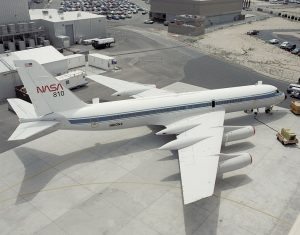
If you’ve ever seen a photo of the Covnair 900 (depicted in the adjacent photo) or the Fokker 100, you may notice that the top of the wings aren’t completely flat. Both of these airplanes have several pod-shaped attachments on their wings. Known as anti-shock bodies, they were originally designed to reduce drag. For a better understanding of anti-shock bodies and how they work, keep reading.
What Are Anti-Shock Bodies?
Anti-shock bodies are pod-shaped attachments found on the top, trailing edge of an airplane’s wings. They were pioneered by Richard Whitcomb and Dietrich Küchemann in the 1950s. While working at NASA and the British Royal Aircraft Establishment, respectively, Whitcomb and Küchemann proposed the use of wing pods to reduce drag at transonic speeds. This led the duo to develop anti-shock bodies.
How Anti-Shock Bodies Work
With their pod-shaped design, anti-shock bodies change the way in which air flows over the body of an airplane. They work by reducing the formation of vortices while simultaneously reducing drag.
Vortices occur during flight. They are defined as swirling masses of air. The pressure difference between the top of an airplane’s wings and the bottom will result in vortices. Vortices create drag, which can slow down the airplane. Anti-shock bodies are able to reduce drag by protecting against vortices.
Why Most Airplanes Don’t Feature Anti-Shock Bodies
Aside from the Covnair 990 and the Fokker 100, you won’t find anti-shock bodies on many airplanes. This is because there are other ways to reduce drag, such as the use of a streamlined airfoil. Airplanes today typically feature a specific airfoil design that eliminates the need for anti-shock bodies.
Some airfoils are designed specifically to delay the onset of drag. Known as supercritical airfoils, they consist of a flat upper surface combined with a downward and curved bottom surface. Many airplanes use a supercritical airfoil rather than anti-shock bodies.
Whether anti-shock bodies are effective at reducing drag remains open to debate. Boeing conducted a study involving these pod-shaped attachments on the 707. Boeing found that the friction drag created by the anti-shock bodies canceled out their drag-reducing benefits.
In Conclusion
Anti-shock bodies are pod-shaped attachments on the top of an airplane’s wings. Developed by a team of aerodynamicists in the 1950s, they are intended to reduce drag by changing the way in which air flows over the airplane. But anti-shock bodies never really took off. Instead, most airplanes use a streamlined airfoil, such as a supercritical airfoil.



